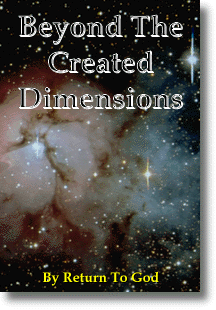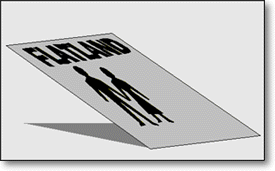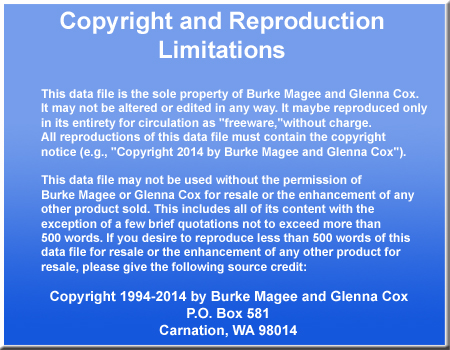

A scientific look at the "extra-dimensionality" of God provides insight into Bible "paradoxes", such as "If God created us, who created Him?" "How can God be near us, yet no one can see Him?" and "How can we have free will, yet God has predetermined everything?"
| How can it be that there is one
God, when the Bible clearly mentions God the
Father, Jesus as God and the Holy Spirit as God? How can we have free will, yet the Bible
states that our actions are predestined? Many things about God are difficult to explain in
human terms. Bible statements sometimes seem like paradoxes. An explanation often used is
that God chose not to reveal the answers to such paradoxes, His ways are difficult for
humans to comprehend and we must have faith in Him and trust Him. Yet this explanation
isn't satisfactory to many people. By examining scientific and physical properties of the
universe, we begin to understand that what appears to be a paradox may, under closer
examination, be quite logical. Resolving these paradoxes can also help us better
understand the nature of God. Universe Created by Force Outside Its Dimensions From recent discoveries, scientists know that the universe was created at a specific instant of time, via a hot explosive event referred to as the "Big Bang". During the Big Bang, particles essential for life (such as iron, potassium, helium, hydrogen, etc.) were created. Scientists have calculated that at least nine dimensions of space were necessary for some of the particles of our universe to be created1. Our universe consists of four dimensions -- length, width, height and time. Additionally, scientists know from the theory of general relativity that the space and time dimensions of our universe had to originate at the same instant as matter and energy. This could have occurred only if the Force (God) which created the universe was operating in dimensions (including time dimensions) independent from, and existing before the four dimensions of our universe. From this, we can conclude that God must operate in dimensions greater than the four dimensions we experience in our universe. This "extra-dimensionality" of God can resolve seeming "paradoxes" of the Bible. To better understand how operating in different dimensions might work, let's look at an example used by Hugh Ross in his book The Creator and the Cosmos. |
 Figure 1. Two dimensional "Flatland" illustrates the concept of God operating outside the dimensions of our universe. Extra Dimensions Give Different Perspective Dr. Ross describes a universe that consists of two dimensions of space (a plane of length and width) rather than the three dimensions of space (length, width and height) that we have in our universe. He calls this two dimensional space "Flatland". In this Flatland, imagine that two two-dimensional beings exist, "Mr. and Mrs. Flat". We can think of Mr. and Mrs. Flat as being like paper dolls existing on a flat surface (see Figure 1). To each other, Mr. and Mrs. Flat each look like a line because they can't view each other from the perspective of height. If a three-dimensional being held his hand just a fraction of an inch above Flatland, Mr. and Mrs. Flat would never see him because his hand would be outside the dimensions of their universe (see Figure 2). If the three-dimensional being poked one of his fingers into the plane of Flatland, Mr. and Mrs. Flat would conclude that this visitor looked like a small circle (see Figure 3). If the three-dimensional being poked three of his fingers into the plane of Flatland, Mr. and Mrs. Flat would conclude that their visitor looked like three small circles (see Figure 4). The three-dimensional being can also produce phenomena in Mr. and Mrs. Flat's universe in ways they can't easily comprehend. For example, he could draw a line across Flatland producing a geological phenomenon that would perplex Mr. and Mrs. Flat.
Figure 3. If a three dimensional being poked his finger into "Flatland", it would be perceived as a circle by the Flatlanders |
 Figure 2. Two dimensional "Flatlanders" can't perceive a hand a fraction of an inch away, because the had is outside their two dimensional universe. The three-dimensional being has much more flexibility than the Flatlanders. He can appear in two places simultaneously and can observe the activities of Flatland without being seen. He can reveal himself to Mr. and Mrs. Flat if he chooses, but only the part of him that the Flatlanders can sense from their limited perspective. If we extend this example considering that God operates in dimensions beyond the four dimensions of our universe, some of the paradoxes of the Bible become easier to understand
Figure 3. If a three dimensional being poked three fingers into "Flatland", it would be perceived as three circles by the Flatlanders |
Paradox: The Lord is near, yet we cannot see Him Scripture states that the Lord is near, yet it also states that no one has seen or can see God. The LORD is near to all who call on him...--Psalm 145:18 God did this so that men would seek him and perhaps reach out for him and find him, though he is not far from each one of us. --Acts 17:27 Can anyone hide in secret places so that I cannot see him?" declares the LORD. "Do not I fill heaven and earth?..." --Jeremiah 23:24 No one has seen the Father except the one who is from God...--John 6:46 God, the blessed and only Ruler, the King of kings and Lord of lords, who alone is immortal and who lives in unapproachable light, whom no one has seen or can see. --1 Timothy 6:15-16 When he passes me, I cannot see him; when he goes by, I cannot perceive him. --Job 9:11 How can the Lord be near, yet unseen? Mr. and Mrs. Flat had the same experience with the three dimensional being who held his hand a fraction of an inch from Flatland. The three dimensional being was very near and could observe everything that happened in Flatland, yet Mr. and Mrs. Flat could not see him until part of him entered their Flatland plane. Through this analogy we can see how in another dimension, God can be very close to us, yet would still be invisible to us. Paradox: "Three Gods" are one One of the most difficult areas of Scripture for many to resolve is the concept of a triune God. Scripture is clear that there is only one God: Hear, O Israel: The LORD our God, the LORD is one.--Deut. 6:4, We know that... there is no God but one.--1 Corinthians 8:4 |
Yet God is
described in the Bible as the Father, the Son and the Holy Spirit as indicated by the
following Scriptures: Therefore go and make disciples of all nations, baptizing them in the name of the Father and of the Son and of the Holy Spirit,--Matthew 28:19 May the grace of the Lord Jesus Christ, and the love of God, and the fellowship of the Holy Spirit be with you all. --2 Corinthians 13:14 There is one body and one Spirit -- ... one Lord, one faith, one baptism; one God and Father of all, who is over all and through all and in all.--Ephesians 4:4-6 We can resolve the paradox of three Gods as one by reconsidering the example of the three-dimensional being relating to Mr. and Mrs. Flat. When the three-dimensional being poked one of his fingers into Flatland, was he a different being than when he poked three fingers into Flatland? The answer, of course, is no -- yet Mr. and Mrs. Flat may well have perceived him as two different beings. One being was a small circle, the other three small circles. In actuality these were just two different manifestations of the same three-dimensional being. In the same way, God the Father, Jesus and the Holy Spirit are also manifestations of one being that exists in another dimension(s). We know that the only way we can see God is if He places a part of His being into our universe-- just as when the three-dimensional being poked his fingers into Flatland. Jesus was actually a physical manifestation of God in our four-dimensional universe, as indicated by the following Scripture: Your attitude should be the same as that of Christ Jesus: Who, being in very nature God, did not consider equality with God something to be grasped, but made himself nothing, taking the very nature of a servant, being made in human likeness. And being found in appearance as a man, he humbled himself and became obedient to death -- even death on a cross!--Philippians 2:5-8. Like the three-dimensional being drawing a line across Flatland, God has also revealed himself to man through manipulation of our universe -- for example, the parting of the Red Sea and Noah's flood. God has also related to us through the Holy Spirit, which could be considered part of an as yet scientifically unrecognized spiritual dimension of our universe. |
Paradox: If God created us, who created Him? Thinking in the context of our universe, it's natural to wonder who or what caused the beginning of God's existence. Science and mathematics teach that everything in this universe had a beginning. At some point in our history, the universe was created, mountains and oceans were formed and plants and animals appeared on the earth. People are born and eventually die. Time moves forward and cannot be reversed or stopped. The linearity of time is a characteristic of our universe. If we are not confined to the four dimensions of our universe including our one dimension of time, the nature of the question "who created God" changes substantially. If there were two or more dimensions of time, time would not be strictly linear -- there wouldn't necessarily be specific beginning points. One wouldn't be confined to moving only forward in time. For example, if there were two dimensions of time (length and width), time would be a plane, rather than a single line. This plane could be thought of as containing an infinite number of time lines running in an infinite number of directions. If God operates in such a plane of time, He can move along an infinite number of time lines independent of our time dimension. He would have no beginning and no end. Scripture is consistent with this view. When Moses asked God what to tell the Israelites when they ask "What is His name?" God said to Moses, "I AM WHO I AM. This is what you are to say to the Israelites: 'I AM has sent me to you.' -- Exodus 3:14. The word from which "I am" is translated in Hebrew is "hayah" which means "to be" and is translated in various forms as "remain", "lasts" and "sustains". This word speaks of the transcendental nature of God. This implies that God exists in all moments of time at the same instant. This would be impossible in our restricted dimensions, but not with multiple dimensions. Scripture clearly states that God existed before the beginning of time and will continue to exist. the hope of eternal life, which God, who does not lie, promised before the beginning of time,--Titus 1:2 you loved me before the creation of the world.--John 17:24 In the beginning you laid the foundations of the earth, and the heavens are the work of your hands. They will perish, but you remain; they will all wear out like a garment... But you remain the same, and your years will never end.--Psalm 102:25-27 Grace and peace to you from him who is, and who was, and who is to come... --Revelation 1:4 |
Paradox: How can there be predestination and free will? Scripture indicates that God knows what will happen in the future and that, in fact He predetermined it before He created the world: And we know that in all things God works for the good of those who love him, who have been called according to his purpose. For those God foreknew he also predestined to be conformed to the likeness of his Son, that he might be the firstborn among many brothers.--Romans 8:28-29 For he chose us in him before the creation of the world to be holy and blameless in his sight. In love he predestined us to be adopted as his sons through Jesus Christ... --Ephesians 1:4-5 In him we were also chosen, having been predestined according to the plan of him who works out everything in conformity with the purpose of his will,--Ephesians 1:11 For the Scripture says to Pharaoh: "I raised you up for this very purpose, that I might display my power in you and that my name might be proclaimed in all the earth." -- Romans 9:17 Scripture also indicates that we are each responsible for the choices we make and for our thoughts and deeds: Peter replied, "Repent and be baptized, every one of you, in the name of Jesus Christ for the forgiveness of your sins... The promise is for you and your children and for all who are far off -- for all whom the Lord our God will call."... "Save yourselves from this corrupt generation." --Acts 2:38-40 For it is with your heart that you believe and are justified, and it is with your mouth that you confess and are saved... for, "Everyone who calls on the name of the Lord will be saved."--Romans 10:10-13 "For God so loved the world that he gave his one and only Son, that whoever believes in him shall not perish but have eternal life.-- John 3:16 Watch your life and doctrine closely. Persevere in them, because if you do, you will save both yourself and your hearers. -- 1 Timothy 4:16 How can God predetermine what will happen, yet we are also responsible for our actions and have the free will to choose? |
Is there a paradox between predestination and free will? Man makes decisions based upon events that occur in man's time dimension. Since man exists within a time dimension that proceeds ever forward, man cannot undo actions once a moment has passed. We can think of man's single dimension of time as being like a unidirectional line. God is not restricted in time and space as man is. Since God exists in dimensions greater than our time and space, His "time" could be multidimensional -- two, three or even ten dimensions. God's freedom to operate in multiple dimensions of time can explain the seeming "paradox" of predestination vs. free will. To understand how God might operate in multiple dimensions of time, let's examine an example used by Hugh Ross in The Creator and the Cosmos. Let's assume God operates in three dimensions of time -- just as an example -- He may operate in many more dimensions of time. Figure 5 shows God's time dimension modeled as a three-dimensional sphere and our one dimension of time as a line at the equator of the sphere. God, from a single point at the top of the sphere, could exist and work in our past, present and future simultaneously. If God were limited to just three dimensions of time, such as depicted by the sphere, he could plan the events in our lives to lead us to the (free will) choice that He preordained. The care and planning that God takes in our lives is evidenced by many Scriptures. "Are not two sparrows sold for a penny ? Yet not one of them will fall to the ground apart from the will of your Father. And even the very hairs of your head are all numbered. -- Mark 10:29-30 From one man he made every nation of men, that they should inhabit the whole earth; and he determined the times set for them and the exact places where they should live. --Acts 17:26 |
But God could operate in
greater dimensions of time. Although it is difficult to imagine how operating in four or
more dimensions of time would work, one can see that the greater number of dimensions
available, the greater the flexibility. Mathematicians can show that in ten or perhaps
fewer dimensions it's possible for God to predetermine everything, yet give us free
choice. To help understand how two things that are unequal in a given number of dimensions could be equal in a greater number of dimensions, let's examine another example by Hugh Ross in his book The Creator and the Cosmos. The paradox is this: How can a triangle be equal to a circle? Figure 6 shows that in two dimensions this is impossible, but if you add a third dimension, one vertex of the triangle can be "raised" and then the triangle center can be rotated to produce a cone, which is a series of concentric circles contained within a triangle. Therefore, in three dimensions it is possible to show that a triangle can be simultaneously equal and not equal to a circle . Given that God can operate in extra dimensions of time, free will and predestination are not a paradox.
Figure 6. The paradox of how a triangle can be equal to a circle. (A) In two dimensions this is impossible. If you add a third dimension (B) , one vertex of the triangle can be "raised" and then the triangle center can be rotated to produce a cone (C), which is a series of concentric circles contained within a triangle. Therefore, in three dimensions it is possible to show that a triangle can be simultaneously equal to a circle. "Paradoxes" Only if God Has Human Limits Seemingly unresolvable Bible statements can be found to be logical if one isn't confined to the dimensions of man's universe. Bible statements seem impossible to resolve from a human perspective because they aren't resolvable within the dimensions of space and time of our universe. Recent scientific discoveries and understanding show us that God operated in at least nine dimensions of space to create the four dimensions of space and time of our universe. Knowing that God has this "extra-dimensional" power, Bible "paradoxes" can be resolved. In fact, such "paradoxes" from a human viewpoint substantiate that the Bible is God's word, written under supernatural direction. The Bible would have been impossible to write using the human knowledge of science of ancient times because the Bible is substantiated by scientific principles that humans at the time it was written had no way of knowing. References The primary reference for this article and an excellent book for further study is The Creator and the Cosmos by Hugh Ross, ã 1993, published by NavPress. |
Back
to http://www.ReturnToGod.com
